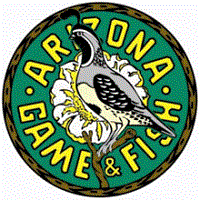Arizona Game and Fish Remind Boaters and Anglers to Be ‘Good Stewards’
Arizona Game and Fish Department 12.04.13

Boaters who “Clean, Drain and Dry” can stop the spread of Aquatic Invasive Species
Preventing the spread of Aquatic Invasive Species (AIS) in Arizona waters starts with Arizona boat owners and anglers. To protect Arizona lakes, rivers and streams from the devastating effects of invasive species, Arizona Game and Fish laws require boaters and anglers to be good stewards by cleaning, draining and drying their boats and pulling the boat plug when leaving an AIS-affected lake. Failure to do so may result in a citation for the boat owner and possible fines.
Game and Fish is stepping up enforcement because invasive species have found their way into several Arizona lakes and rivers after being transported from one body of water to another. Cleaning, draining and drying boats, trailers, waders and fishing equipment helps contain these invaders and minimizes damage to boats, water intakes, power plants, aquatic habitats, native and sport fish populations, and water conveyance infrastructure.
In 2009, the Arizona Legislature passed the Aquatic Invasive Species Interdiction Act (A.R.S. §17-255), authorizing regulatory measures known as “Director’s Orders” and making the Game and Fish Department responsible for establishing mandatory protocols to stop the spread and transport of these invasive organisms, and enforcing public compliance with these protocols. The Director’s Orders have identified aquatic invasive species affecting these Arizona waters:
- Lake Powell: quagga mussel
- Lake Mead: quagga mussel, New Zealand mudsnail
- Lake Mohave: quagga mussel, New Zealand mudsnail
- Lake Havasu: quagga mussel, didymo
- Lower Colorado River below Lake Havasu: quagga mussel, giant salvinia, apple snail
- Lake Pleasant: quagga mussel, largemouth bass virus (LMBV)
- Lees Ferry: New Zealand mudsnail, whirling disease
- Lower Salt/Verde River: apple snail
- Bartlett Lake: LMBV
- Roosevelt Lake: LMBV
- Saguaro Lake: LMBV
To help stop the spread of aquatic invasive species, it is vital that boaters and anglers avoid transporting water, live fish or fish body parts from one body of water to another. Wipe down your boat, pull your plug, and drain all water from any places in your boat where it may accumulate. According to Chris Cantrell, Chief of Fisheries for Arizona Game and Fish, being a good steward means boaters and anglers should clean, drain and dry their watercraft and equipment each and every time they come out of an AIS affected water, as listed above.
“Going through the steps to prevent the spread of AIS is easy and should become as routine as securing your boat to its trailer,” said Cantrell. “Doing this every time you pull your boat out of the water is the best way to protect your boat, and your favorite places to boat and fish in Arizona.”
To help stop the spread of aquatic invasive species, boaters and anglers should:
1. Pull out your boat plug at the ramp or parking lot
2. Drain any water from boats, bilge, bait buckets, and live-wells before leaving the launch area.
3. Dispose of all unused bait in the trash, never in the water.
4. Never transfer live fish or fish body parts (i.e., head, skin, entrails) from one body of water to another.
5. Rinse any mud and/or debris from equipment and wading gear.
6. Use vinegar to disinfect your equipment. Vinegar can be reused several times, if needed.
7. Allow everything to air dry before moving to another body of water.
8. Educate others to follow these steps.
Don’t let a citation spoil your next boat outing. Be sure to pull your boat’s plug and clean, drain and dry your boat before leaving any AIS-affected water. To view the department’s watercraft decontamination protocols, visit: www.azgfd.gov/ais.

